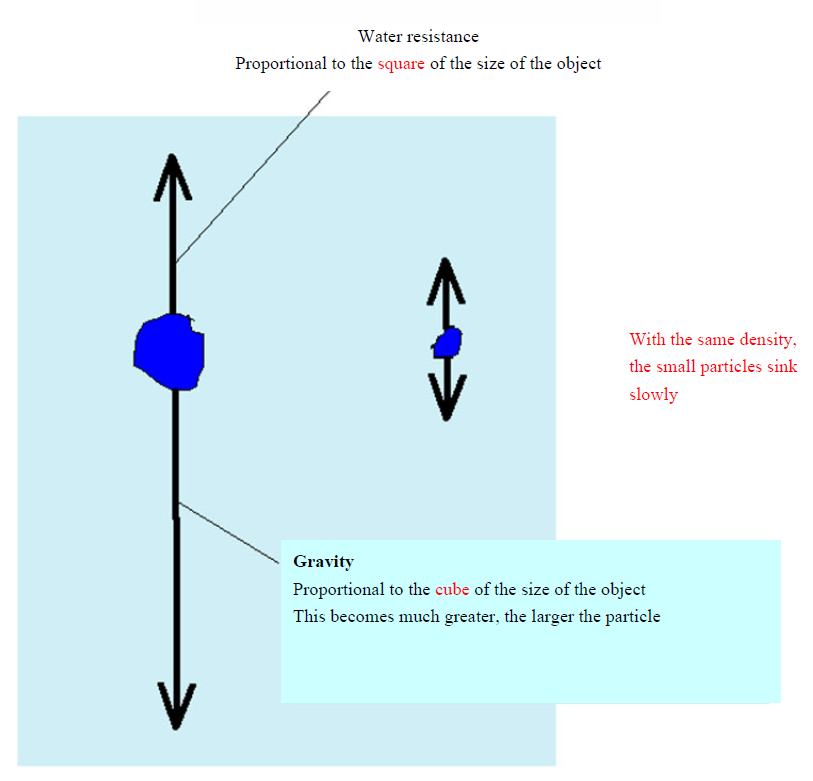Don't let COVID get the better of you 5 (submerge small particles in water)
Let's take a look!
What type of experiment is this?

Experimental procedure and explanation:
- The COVID-19 pandemic has become a serious problem. To avoid the spread of the disease, it is necessary to avoid the three Cs (closed space, crowded places, and close-contact settings). This is due to the fact that COVID particles remain airborne for long periods of time. Therefore, they avoid closed spaces, crowded places, and close-contact settings. This experiment is related to the velocity at which small particles fall.
- We conduct an experiment with Japanese mineral pigments to see how fast they sink in water. Mineral pigments are made from finely ground rock, which is mixed with glue (for adherence) and other ingredients. The particles are numbered according to size (usually 5 to 13 and white), and the higher the number, the smaller the particle.
- The blue powders used in this project are ultramarine extra coarse grain (equivalent to No. 5), No. 6, No. 7, and No. 12.
- We place each in a container with water. Then, we compare the speed of sinking of these when turning them upside down. We confirm that the smaller particles sink more slowly.
- When an object is sunk or dropped, it initially accelerates, but eventually falls at a constant speed when gravity and water resistance (or air resistance) become equal in magnitude. This is referred to as terminal velocity. For extremely small particles, the terminal velocity is attained in a short time. On this occasion, No. 12 and some others are assumed to have reached terminal velocity immediately.
- The magnitude of water resistance acting on powder grains is proportional to the square of the size (length) of the grains (e.g., if the size is twice as large, the water resistance is approximately four times as large).
- The magnitude of gravity acting on a grain of powder is proportional to the cube of the size (length) of the grain (e.g., if the grain is twice as large, gravity is eight times greater). In other words, the larger the grain, the greater the gravitational force. The strength of gravity becomes greater than the increase in water resistance. Therefore, if we consider grains of equal density, the larger the grain, the faster it sinks. Conversely, the smaller the object, the slower it sinks.
- No. 12 sinks extremely slowly. The size of the particle for No. 12 is 15 to 20 micrometers (one micrometer is one thousandth of a millimeter), or approximately one and a half to two hundredths of a millimeter.
- In contrast, COVID particles are approximately 100 nm (nanometer; 1 nm is one millionth of a millimeter), which is a very small particle, approximately 1/10,000 of a millimeter. It is approximately 1/150~200th the size of the No. 12 mineral pigment. By comparing this to the current experiment, the water and air, particle density, and shape are different, in addition to the size of the particles. However, rough calculations (not using quantum theory) show that the speed at which the COVID particles fall through the air is about 1/100,000th of the speed of the current No. 12, which is slower by one order of magnitude.
- Thus, the speed at which the COVID particle falls with gravity is extremely slow. Further, it is best to expect that gravity will not cause it to fall to the floor, since it will float up if a person moves or the air moves.
- If there is a possibility of viral infection in the air, it is important to ventilate the area.
- This experimental video was produced with the support of JSPS Grant-in-Aid for Scientific Research 18K03956.
| [Keywords] | Drag, water resistance, terminal velocity |
| [Related items] | Mysterious powder, Large ball and small ball 2 (same density) |
| [Reference] | Ryozo Ishiwata, "Illustrated Fluid Dynamics Trivia", Natsume Publishing, P72-75. |
Last Update:1.31.2025

